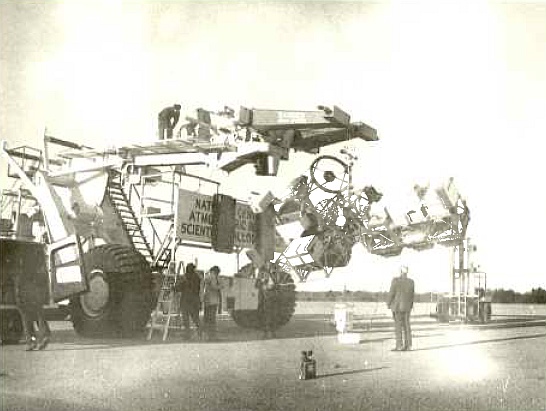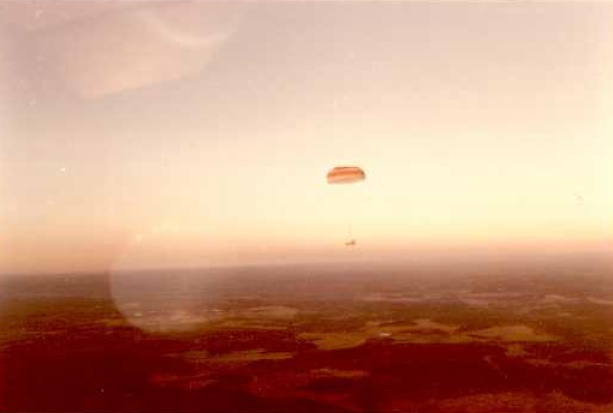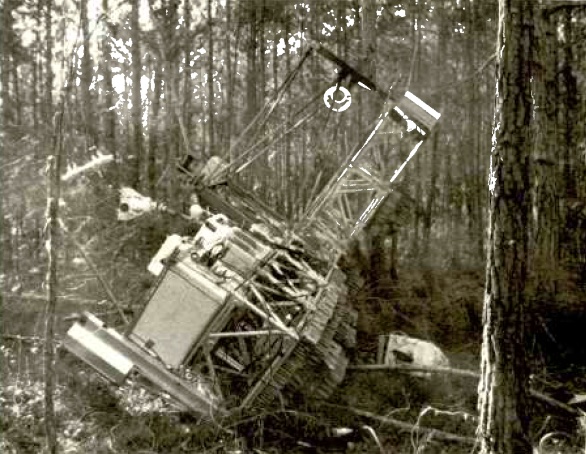Purpose of the flight and payload description
The Imperial College 41-inch telescope was a Cassegrain instrument designed for far-infrared astronomical observations. The instrument was developed during the 1970's decade by the Astronomy Group at the Blackett Laboratory, Imperial College London.
At left we can see a description of the instrument (click to enlarge). The primary mirror had a diameter of 41 inches with a spherical shape and a focal ratio of f/2.9, while the secondary mirror, also spherical, measured 13.6 inches in diameter. A flat tertiary mirror redirected the light beam at a 90° angle towards the detectors. All mirrors were crafted from aluminum alloy, gold-coated for optimal reflectivity, and tested to ensure a surface accuracy better than 4 micrometers. The primary mirror underwent traditional polishing techniques after a hard nickel layer was deposited.
The telescope was constructed entirely from aluminum alloy to ensure a negligible thermal focal shift, a crucial feature given the temperature variations during balloon flights. This design choice eliminated the need for an active focusing mechanism, simplifying operations and reducing weight. The structure incorporated Serrurier trusses, with shock-mounted supports for the 105-kg primary mirror to prevent displacement under varying attitudes. The entire system weighed 215 kg, including optics, and was kinematically mounted for stability during flight.
The system's design minimized thermal emission interference, with the secondary mirror acting as the entrance pupil and ensuring that the detector field did not extend beyond the primary mirror's edges. The aluminum optics were highly resistant to impact damage and thermal gradients, further enhancing durability and performance.
The telescope employed two helium-cooled composite bolometers for detection, allowing simultaneous two-color photometry in the 40-80 micrometer and 80-400 micrometer ranges. Each bolometer operated at a cryogenic temperature of 1.7 K, with a cold stop precisely aligned at the focal plane to restrict the field of view to 3 arcminutes. Helium-cooled filters provided wavelength selectivity, incorporating materials such as KRS-5 and diamond-dusted layers for effective spectral filtering. The detectors and filters were housed within a liquid-helium-cooled copper shield to reduce thermal noise.
A resonant focal plane chopper system facilitated rapid switching between source and background observations, minimizing microphonic noise and ensuring stability. The system used paired mirror carriages on parallel springs, driven electromagnetically with internal momentum conservation. Onboard electronics processed signals via phase-sensitive detectors with telecommandable parameters, complemented by a system for offset signal cancellation.
A key component of the system was the stabilized balloon platform (SBP) on which the telescope was mounted. It was designed and constructed by GEC Marconi Electronics Ltd. for the U.K. Science Research Council (SRC) and operated by a team from SRC's Appleton Laboratory. The gondola with dimensions of 10 feet by 15 feet by 9 feet high was stabilized in three axes-azimuth, elevation, and roll-using a central gimbal-torque-motor cluster suspended from the balloon, with the balloon itself served as the reaction mass for azimuthal stabilization.
It featured two guidance modes. In the degree mode, azimuthal position information came from magnetometers, while accelerometers were used for roll and elevation. In the arcminute mode, a star sensor provided position information, capable of detecting stars up to a magnitude limit of +5. Rate information in both modes was sourced from a three-axis gyro package. The star sensor could offset ±5° in both elevation and cross-elevation to aid telescope acquisition and tracking of fields without suitable guide stars. Additionally, a TV camera provided a 10° star field view to assist in locating guide stars.
An auto-balancing system pumped fluid between tanks at the roll and elevation axis ends, redistributing weight whenever torque demand exceeded 2 Nt-m. For launch and parachute descent, the gondola was stowed by pumping extra fluid into specific tanks, parking the platform at -5° in elevation and +5° in roll.
Power came from sealed nickel-cadmium batteries, while telemetry and telecommand relied on systems provided by the National Scientific Balloon Facility which was in charge of the flights. The total payload weight below the parachute was approximately 2800 pounds.
Details of the balloon flight
Balloon launched on: 11/29/1976 at 17:35 CST
Launch site: Columbia Scientific Balloon Facility, Palestine, Texas, US
Balloon launched by: National Scientific Balloon Facility (NSBF)
Balloon manufacturer/size/composition: Zero Pressure Balloon Winzen - 122.334 m3 (25.40 microns)
Flight identification number: 998P
End of flight (L for landing time, W for last contact, otherwise termination time): 11/30/1976 at 6:45 CST (L)
Balloon flight duration (F: time at float only, otherwise total flight time in d:days / h:hours or m:minutes - ): 13 h 10 m
Landing site: 8 km NW of Opelika, Alabama, US
Payload weight: 1356 kgs
The mission was launched as Flight 998-P at 17:35 CST on November 29, 1976 from the National Scientific Balloon Facility (NSBF), in Palestine, Texas. The float altitude of 99,400 ft (30.3km) was reached at 19:41 CST and telemetry was lost at 01:35 CST, giving the experimenters 5 hours 54 minutes of usable time at float. After this time, the balloon overflew an east-west string of towns in northern Alabama, which delayed cutdown until morning twilight (6:03 CST). This permitted immediate visual confirmation from the NSBF aircraft that the parachute had actually opened after the balloon had been valved down from its float altitude to about 70,000 ft. Impact occurred, at 6:45 CST in a thick pine forest about 8km to the northwest of Opelika, Alabama, giving a total flight length of 1210 km.
On entering the tree tops, the front of the telescope was struck by substantial branches which caused the platform to tip to an elevation of +45° before it hit the ground 60 ft below the tree tops, because the moment of inertia of the platform is lowest about this axis. Consequently the payload missed its crush pads entirely and landed on the back edge of the SBP in soft red earth. Fortunately, the 16 kg ballast and cutdown command receiver installed at the base of the parachute shrouds was prevented from striking the payload because the parachute became firmly intertwined in the trees above the payload. Several space frames were bent by their impact in addition to those whose tubes were broken by branches during the fall through the trees. The telescope weight was thrown predominantly onto its rear mounting point which suffered a distortion of about 1 cm. The 105 kg primary mirror, its mounting points and the rest of the structure were undamaged.
Recovery of the payload from this forest took about a day and was assisted by loggers who cut down awkward trees and bulldozed a path to the nearest track, and by the county sheriff who loaned a four-wheel drive vehicle. Transport back to the NSBF took a further two days, and the payload was refurbished and ready for flight again within ten days.
The mission was dominated by a failure to control the SBP pointing effectively. A design error in the control of the three-tank auto-balancing system caused the elevation torque demand signal to override any signal correcting roll axis imbalance, leading to the SBP being firmly weighted against the roll stop throughout the flight.
IC experimenters used the flight to study the performance of the telescope system in the stratospheric environment. A large far-infrared telescope could not be tested on the ground due to the atmosphere's optical depth, so verifying the system's ability to compensate for instrumental radiation became the most valuable task. Electronics, the starfield camera, and the two bolometers' noise levels performed within specification, with noise levels at non-vibrating periods reaching 50% of the normal laboratory level.
Post-flight analysis disproved the initial belief that five events occurring near Saturn were genuine infrared scans. No infrared observations were identified, and telescope sensitivity calibration had to await the next flight of the instrument in December 1976.
External references
- Far infrared astronomy Sci. Prog., Oxf. (1979) 66, 119-150
- Far-infrared astronomy with a balloon telescope Thesis by Sugden, Keith Charles, Imeprial College, 1978
- National Scientific Balloon Facility Annual Report, FY 1977 National Center for Atmospheric Research, 1978
- The Imperial College 41-inch telescope for far-infrared balloon astronomy Optical Engineering, vol. 16, Nov.-Dec. 1977, p. 558
10215If you consider this website interesting or useful, you can help me to keep it up and running with a small donation to cover the operational costs. Just the equivalent of the price of a cup of coffee helps a lot.




